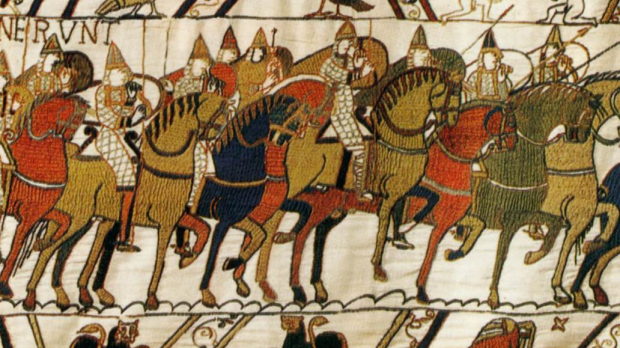Lenten Campaign 2025
This content is free of charge, as are all our articles.
Support us with a donation that is tax-deductible and enable us to continue to reach millions of readers.
New evidence about the famed Bayeux Tapestry has affirmed that it was intended to be displayed in the Bayeux Cathedral in Normandy, France. For centuries, there has been debate about where the tapestry was manufactured, who commissioned it and whether it was originally displayed in England or France. But measurements carried out by a British professor of art, and visualizing of the cathedral as it was in the 11th century, have demonstrated that the artisan who made the tapestry intended it for the French cathedral.
The tapestry, which is 230 feet long and tells the story of the Norman Conquest of 1066, will be lent to Britain for the first time in recorded history, following a promise made by French President Emmanuel Macron last year. It might go to England as early as 2022, when the Bayeux Museum, where it is currently housed, will close and a new museum will be constructed. When it is in England, people will be able to see it as it was intended to be seen, thanks to the calculations and research of Christopher Norton, a professor of art history at the University of York.
Norton wrote in the Journal of the British Archaeological Association that the embroidery was designed to be hung along the north, south and west sides of the nave of Bayeux Cathedral, between the west wall and choir screen, according to Science Daily.
“This discovery proves that the designer must have visited Bayeux and known the nave’s exact dimensions, adjusting the design accordingly,” the website related. Norton said there is now evidence that the physical and narrative structure of the tapestry are “perfectly adapted” to fit the nave of the Bayeux Cathedral.
Said Science Daily:
Professor Norton’s research is based on mathematical calculations, analysis of documentary evidence including of the Tapestry’s linen fabric, and of surviving architectural details. Published data on the Tapestry’s measurements was assessed and compared along with information on medieval cloth sizes, allowing for factors such as shrinkage and missing sections. By studying the cathedral’s surviving architectural features, Professor Norton also established how the nave would have looked in the 11th century. This enabled him to establish the nave’s original proportions by pinpointing the choir screen’s location—the Tapestry would have fitted five bays of the nave, with the artwork’s “narrative” deliberately structured in relation to doorways and architectural supports.
Thus, Norton recommended that the tapestry, currently kept in a long U-shaped tunnel, should be displayed along three sides of a rectangular space, which would evoke the original architectural setting and enable viewers to appreciate the artwork as intended.
According to the Bayeux Museum, the tapestry was commissioned to decorate the new cathedral of Bayeux in the 11th century and probably spent seven centuries in the cathedral’s treasury. It was then moved to a number of different locations in the city and throughout France. The Nazis had it moved to the Louvre, for example. Since 1983, it has been on display in the former Seminary of Bayeux.

